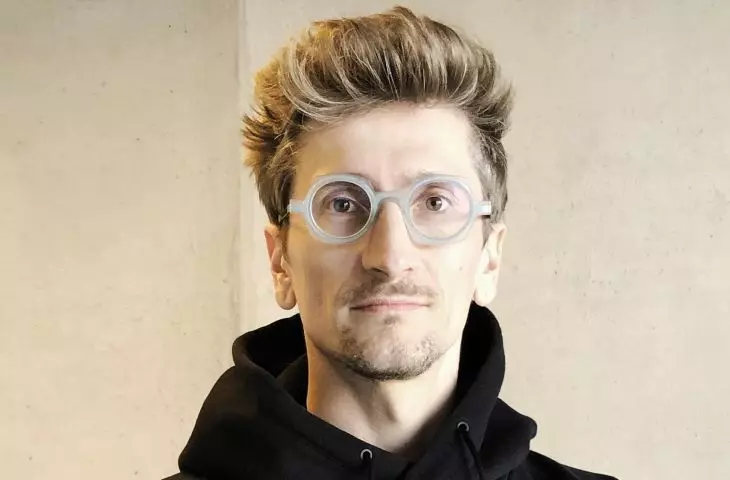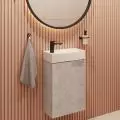The end of December — because that's when we finished preparing the January issue — is the best time for all kinds of summaries. And like every year, we ask practitioners and architecture critics to write what they consider a success and what they consider a failure in a given year. We do it in the convention of Sink or Soar. We give our total freedom of expression and do not moderate this discussion. Rather, we are very curious about it.
Previous episodes of the series featured:
- Oskar Grąbczewski - architect, OvO Grąbczewscy Architekci studio
- Filip Springer - reporter and photographer
- Hubert Wąsek - president of SARP Częstochowa Branch
- Maciej Franta - architect, founder of Franta Group Architects studio
- Marta Sekulska-Wronska - architect and partner at WXCA studio, president of OW SARP
Tomasz Malkowski in Sink or Soar 2022 from A&B 01|2023 issue
The number of things that annoyed me about architecture in the past year was considerable. It's been another year of nitpicking over construction law and it's been so severely overblown in recent times. I even had a whole litany of complaints and grievances prepared, but thought I wouldn't spill them here. In line with the recent book hit by Maria and Jan Peszek, I prefer to „naku*wia zen.” I am writing the text while sitting in a comfortable, warm and safe apartment. At the same time, millions of people across the eastern border are freezing and living in constant trepidation. We on this side are the lucky ones, and we often forget this. In recent days, several of my friends in the media industry have lost their jobs. As if the worries weren't enough — so there is also a massive economic crisis. Therefore, instead of typifying the kits, I prefer to focus exclusively on the hits — the positives that can inspire us to do better in 2023.
And there has been a lot going on in the past twelve months, and the happy take and architectural sisterhood have repeatedly risen to the occasion. Thanks to Hubert Trammer, it was possible to invite Shigeru Ban, a Pritzker laureate, to Poland, so that he could implement his proprietary Paper Partition System, used for rapid construction of interlocking walls in places of mass residence for people affected by some disaster, on our soil. With significant support from architect Jerzy Lątka of the Wroclaw University of Technology and a whole host of architecture students and volunteers, we managed to build dignified spaces for the temporary residence of war refugees from Ukraine in the huge hall of a former hypermarket in Chelm or at the Wroclaw Central train station. The project was not without formal problems with Polish fire regulations, but the quick response of Polish architects made it possible to adapt the Japanese patent to our realities.
There were many more architectural initiatives related to the war in Ukraine. I will also mention the conversion of the interior of one of the office buildings in Warsaw's Mokotow district into a school for Ukrainian children. Here, architects from xystudio pro bono studio were involved in the adaptation project and used their experience in creating an inspiring educational environment to create a colorful and safe haven for the youngest victims of the war in the east.
The conservation community was also involved in helping Ukraine. Shortly after the outbreak of war, local government conservationists from all over the country organized collections of materials to secure Ukrainian monuments — sometimes things as mundane as sandbags, thousands of which are used to protect valuable monuments and historical sites in Lviv, Kiev or Kharkov. Also praiseworthy is the initiative of the Warsaw authorities to establish the House of Reconstruction of Ukraine, with the Capital Conservator of Monuments Michal Krasucki as coordinator. A group of experts from Poland and Ukraine is already considering the future reconstruction of destroyed Ukrainian cities and villages, developing recommendations for future actions, and raising funds for the reconstruction and current preservation of monuments.
For years I have also appreciated how much Przemo Lukasik and the medusa group studio are doing good for Upper Silesia. Not only working there and developing the studio in Bytom, or designing more great projects, to mention their latest work, the skyscrapers.KTW in Katowice, which will surely become a new symbol of the city. Medusa is also constantly involved in the protection of Silesian post-industrial heritage, initiating discussions around more monuments, such as creating a light installation at the Szombierki Combined Heat and Power Plant complex a few years ago. At the end of 2022, Medusa and Przemo Lukasik were among the main initiators of the „S.O.S. Krystyna Shaft” campaign. This time they drew the public's attention to another deteriorating technical monument in Bytom — the modernist former shaft of the now-defunct Szombierki mine. A light and sound installation was prepared, so that in the evening the tower flashed with red light and a heartbeat could be heard from afar, which then turned into an S.O.S. signal, as if it was a sign that the monument was still alive, but urgently needed help. The architects prepared a pro bono concept for the reconstruction of the shaft (the third in the last dozen years!), this time the most radical. Visualizations show the shaft stripped of its brick facade, its steel structure would become a carrier of a vertical park with a vantage point, but also offices. The project can be seen on a website prepared by medusa. The architects hope that thanks to the action the local or provincial authorities will become interested in the fate of the monument, they also want to draw the attention of investors to the potential of the post-industrial building.
There was also no shortage of great realizations. For me, one of the best commissioned in 2022 was the modernization of the Silesian Planetarium in Chorzow. Its authors from the Consultor studio in Poznań not only managed to bring out the now somewhat faded beauty of the brilliant 1950s building designed by Zbigniew Solawa, but also wisely expanded this mini solar system (which the planetarium and observatory form) with the Silesian Science Park, which was housed in a new underground volume. The modern expansion engages in an interesting dialogue with the old architecture, but is not afraid to show its distinctiveness. Finally, at least one building from the Silesian Park, once the famous Provincial Park of Culture and Recreation, has been given a new life, because, unfortunately, many of the modernist pavilions there are still deteriorating, and some even face demolition.
Of the small-scale projects, the Robak House designed by Piotr Kuczi made a great impression on me. Modest in terms of budget and volume, the private development is at the same time full of ingenious solutions in the spirit of zero waste, for example, the boarding from the lost formwork of the walls was used as ceiling material, and most of the materials were left in their raw state to save on superfluous finishing. This is a clever alternative to the dominant single-family house architecture in Poland, which are either lackluster finesse typical catalog houses or high-budget, ultra-modern villas. Kuczia, together with conscious investors, show that another way is possible — and at the same time they managed to create architecture that is downright avant-garde.
On the other hand, the best public space was unquestionably created by the Architecture Studio of Aleksandra Wasilkowska — this is the modernization of the market in the suburban municipality of Blonie. Previously, the architect gathered similar experience during the revitalization of the Bakalarska market in Warsaw, where she managed to reconcile the expectations of merchants with the low budget of the investment and the preservation of the sensitive economic and social environment that such places usually have. In Błonia, the same has been achieved, and even more, with an even more open structure and an unusual hybrid of market square and park. Perhaps the most unusual public space in Poland in recent years has been created. The lightness of the solutions, the simple typology of the canopies, the cheapness of the materials, but also the unusual functionality are reminiscent of the projects of the Lacaton & Vassal duo (it is worth mentioning that Wasilkowska was a student of Anne Lacaton), and formally it is also a distant echo of the SANAA projects. However, this is not a reproach, but actually an asset of this excellent realization. With all the modern language of architecture, Blonie managed to preserve the familiar atmosphere of a local bazaar.
This year also abounded in many interesting publications. And it is hard to remember the times when the publication of significant books on architecture in Polish was a celebration. Now there are a lot of such premieres during the year, and on top of that we have a rash of comic books on architecture. There are so many publications that it is difficult for me to point out one favorite.
There were also at least a few interesting exhibitions. And those among the best, in my opinion, took place at the Manggha Museum of Japanese Art and Technology in Krakow, specifically in its Europe — Far East Gallery. First, we could see Kengo Kuma 's monographic exhibition with impressive mock-ups or even mockups of objects and installations. The same establishment also showed the exhibition „Spirit Hidden in the Trees. The Tradition and Craftsmanship of Japanese Carpentry,” where one could even immerse oneself in discovering the refined details of Japan's traditional craftsmanship, where the joining of structural elements requires no nails and the precision of woodworking instills the utmost admiration.
All these initiatives, especially the actions of individuals and associations, allow for a little optimism about the near future. Hard times are coming, so it is good that there are so many architects among us who treat their profession as a true mission.
Tomasz Malkowski
Architecture critic, author of articles and television scripts on architecture,
Co-author (with Robert Konieczny) of „Archiprzewodnik po Europie” and „Archiprzewodnik po Polsce”.














